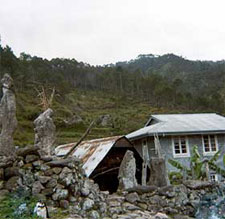The Bayas are the public wedding feasts, which are periodically performed in Sagada. They are normally held two or three times a year –in December and May, and also after the July rice harvest, if desirable. The old men who represent the various dap-ay set the date. Bayas may either be held as an initial marriage feast or be performed by a couple long married to bring good luck and many children. They are performed by both rich and poor but require a minimum of two pigs.
For the Bayas ceremony, relatives in neighboring villages are invited by special messengers. People ask distant relatives as far as they can remember, and even the ka-ising of these relatives. In 1950, for example, when six couples from Dagdag, Demang, and Patay performed the Bayas in May, relatives came from Bauco, Bagnen, Fidelisan, Tetep-an, Amtadao, and the closer barrios, bringing food and other presents for the households celebrating marriage feasts. After the Bayas ceremony has been performed, the couple are bomayas or bommey and live “separate” from their parents in their own house, with their own property and adult responsibilities.
The basic myth for the Bayas ceremony is found in the account of how Lumawig taught the wedding rites. Many of the events are found in the Bontoc Lumawig cycle, but they are adapted to the Sagada situation.

. . . . . . . . . . . . . . . . . . . . . . . . . . . . . . . . . . . . . . . . . . . . . . . . . . . . . . . . . . . . . . . . . . . . . . .
Source:
Eggan, Fred. Ritual Life of the Igorots of Sagada: Courtship and Marriage. Reprinted from Ethnology Volume 4, Number 1, January 1965 p. 86




